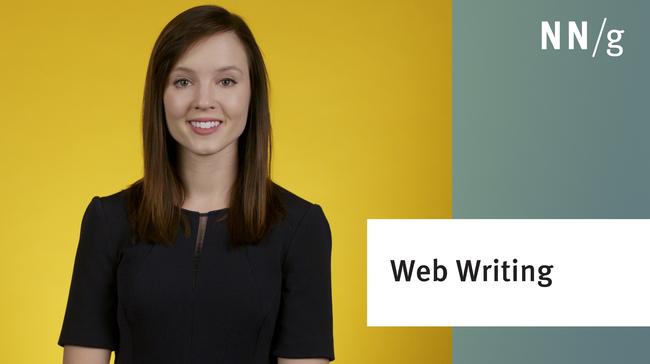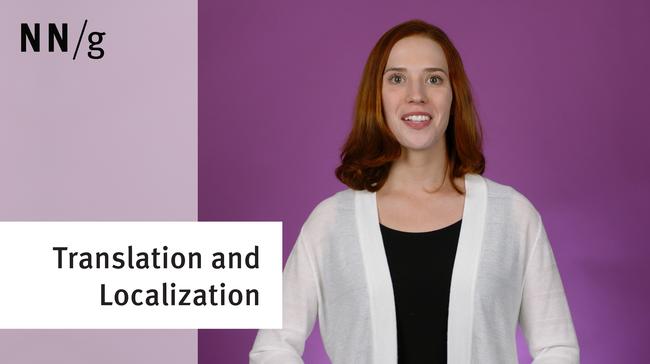A headline is often the first piece of content people read. And often it is the ONLY thing people read. If you want your encounters with people to be successful, make sure to write solid headlines.
Have you ever tried to retell a story you read only to realize the details are fuzzy because you had only read the headline? This is a sign of a memorable headline. Good headlines entice readers and are critical to the success of your website.
Below are 5 tips for writing engaging headlines:
1. Make sure the headline works out of context.
We often think of headlines as being connected with the associated story. However, on the web, headlines usually appear out of context in places such as search results, social-media streams, blog posts, and news feeds. Headlines must be strong and descriptive, especially when standing alone, stripped of supporting content.
Can you guess what the heading below refers to?
New times call for new decisions
The headline contains low information scent—that is, few cues to suggest what the story is about. People rely on visual and textual cues to perceive the usefulness of the content. They don’t spend time making inferences and trying to figure out items that don’t make immediate sense. Minimize cognitive load to maximize usability.
Treat headlines like microcontent—phrases that can be scanned and still give readers a clear idea of the underlying information.
2. Tell readers something useful.
Consider the decision-making process from the users' point of view. When faced with a barrage of links, their time is best spent clicking on headings that have the highest probability of providing value.
Useful headings are specific. They provide facts or information that pique the readers’ interest. Avoid broad and generic headings. They don’t provide value or differentiate you from your competitors.
Tell people something they don’t know and that benefits them. Headings that contain user-centric language are much more refreshing than vague ones that require guesswork.
This headline is too broad:
Make better, faster decisions with data visualization
Contrast it with:
Data visualization helps you detect and prevent fraud faster
The second one is better because it is more specific and provides a concrete benefit that might arouse the reader’s curiosity.
3. Don’t succumb to cute or faddish vocabulary.
Minimize hype and idioms (expressions). They are often vague, obscure meaning, and often change the tone of copy, usually for the worse. Consider this headline:
Get the most bang for your buck with XYZ
The headline above sounds pretty tacky and inauthentic, and degrades credibility. In addition, idioms such as “bang for your buck” often lack meaning to nonnative English speakers.
Don’t be tempted to include overly informal language to sound modern and hip. It is much better to aim for clarity and authenticity. Keep your headlines straightforward by using familiar keywords. This is better:
Increase productivity by 24% with XYZ
Of course, there are exceptions to this rule. You can use specialized language when you address a specialized audience; in those cases jargon improves communication. However, before you sprinkle jargon all over your copy, verify that your entire audience truly understands it.
4. Omit nonessential words.
The one place worth practicing being concise is in headlines. Spend time editing headlines to cut unnecessary words and tangled messages. Shorter headlines require less cognitive effort. And longwinded headlines don’t scale well to variable container sizes: they have a higher chance of being truncated when displayed on small mobile screens, for instance. Convoluted headlines like this lose readers:
Caster, a technology company, buys Mitchell, with assistance from Jon & Smith, for $1.2B
There are too many details that obscure the gist of the heading. The sentence also contains three commas, which create a jerky, start–and–stop effect.
The headline can be made smoother by removing less important details, as in the versions below:
Caster buys Mitchell for $1.2 billion –or–
Jon & Smith orchestrates $1.2 billion deal for top technology firms
5. Front-load headings with strong keywords.
One of the best ways to get traffic to your site is to front-load your headlines with keywords. Moving keywords to the front of titles increases the likelihood that they get noticed. Our eyetracking studies show that readers pay most attention to the first few words in lists. Don’t count on people reading the end of sentences.
Let’s compare the following headlines:
(1) Behold the new technologies for creating 3-D imagery and
(2) Creating 3-D imagery gets easier with new technologies
The first one runs the risk of not being read because the key phrase (creating 3-D imagery) is positioned at the end. Users must read the entire headline to understand its meaning.
The second one is better. Moving the keywords to the front makes the heading more scannable. People can read only the first few words and still understand what the article is about.
Conclusion
Make a good first impression with short, keyword-leading headings that sound authentic, contain useful information, and make sense out of context. Try to follow all of these tips in one headline and you should notice a lift in user engagement.
Learn how to write compelling digital copy at our conference.





Share this article: